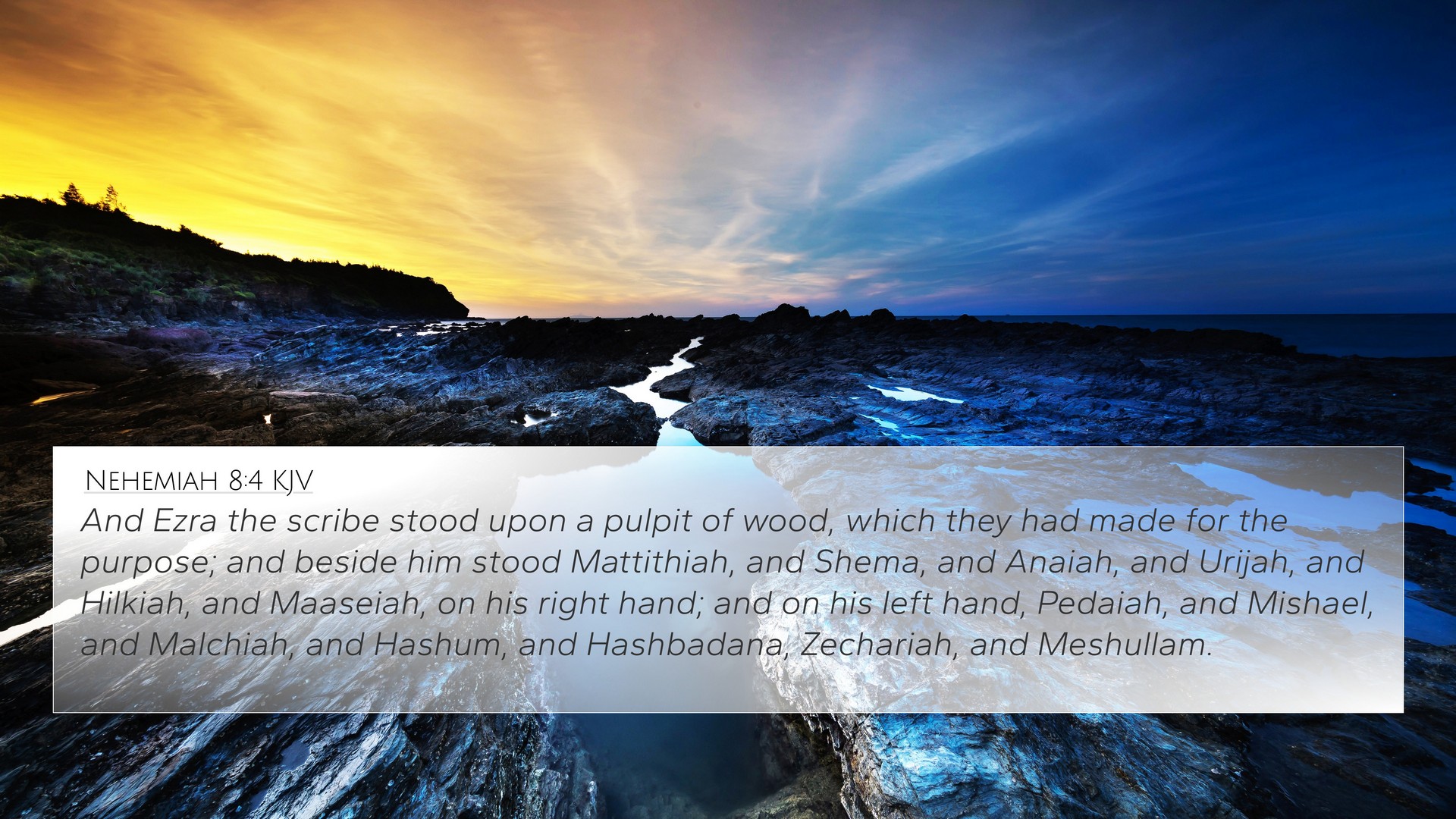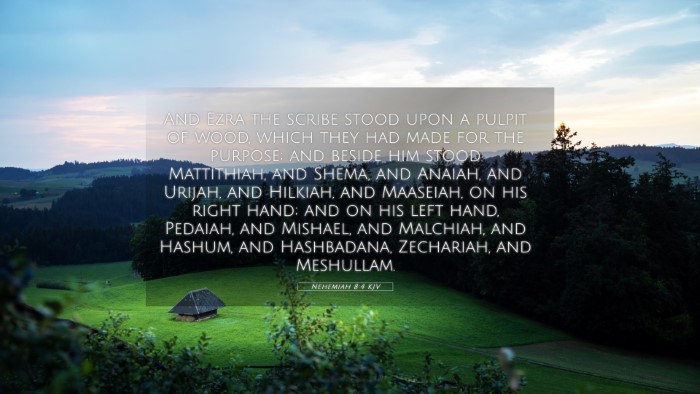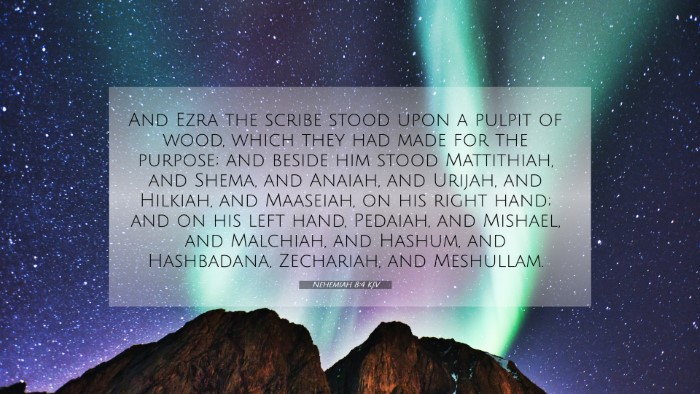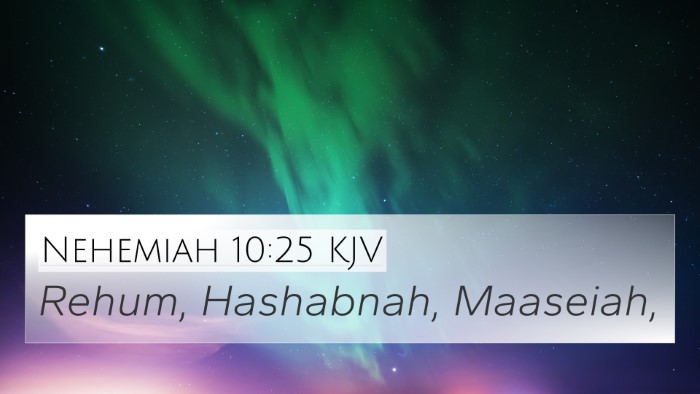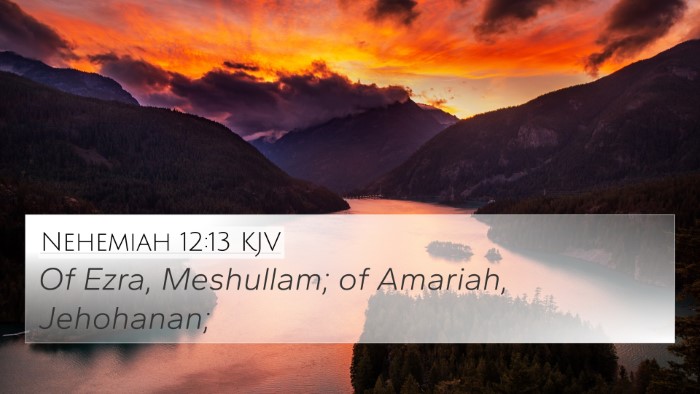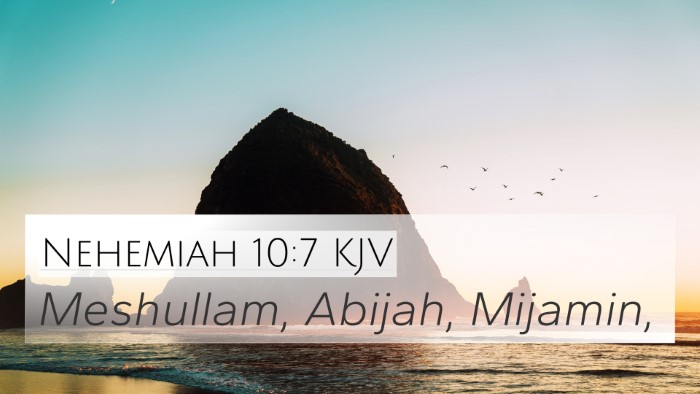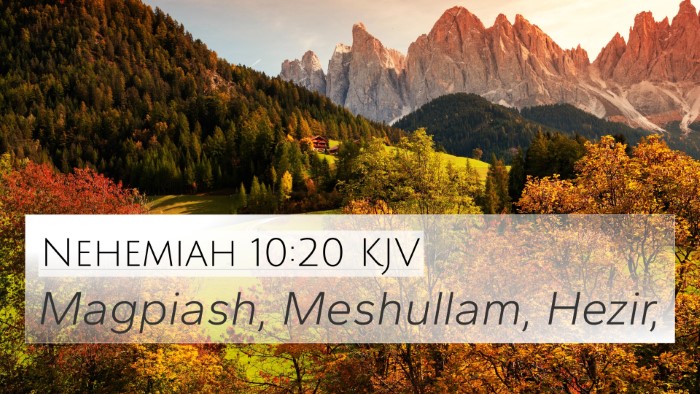Old Testament
Genesis Exodus Leviticus Numbers Deuteronomy Joshua Judges Ruth 1 Samuel 2 Samuel 1 Kings 2 Kings 1 Chronicles 2 Chronicles Ezra Nehemiah Esther Job Psalms Proverbs Ecclesiastes Song of Solomon Isaiah Jeremiah Lamentations Ezekiel Daniel Hosea Joel Amos Obadiah Jonah Micah Nahum Habakkuk Zephaniah Haggai Zechariah MalachiNehemiah 8:4 Similar Verses
Nehemiah 8:4 Cross References
And Ezra the scribe stood upon a pulpit of wood, which they had made for the purpose; and beside him stood Mattithiah, and Shema, and Anaiah, and Urijah, and Hilkiah, and Maaseiah, on his right hand; and on his left hand, Pedaiah, and Mishael, and Malchiah, and Hashum, and Hashbadana, Zechariah, and Meshullam.
Uncover the Rich Themes and Topics of This Bible Verse
Listed below are the Bible themes associated with Nehemiah 8:4. We invite you to explore each theme to gain deeper insights into the Scriptures.
Nehemiah 8:4 Cross Reference Verses
This section features a detailed cross-reference designed to enrich your understanding of the Scriptures. Below, you will find carefully selected verses that echo the themes and teachings related to Nehemiah 8:4 KJV. Click on any image to explore detailed analyses of related Bible verses and uncover deeper theological insights.
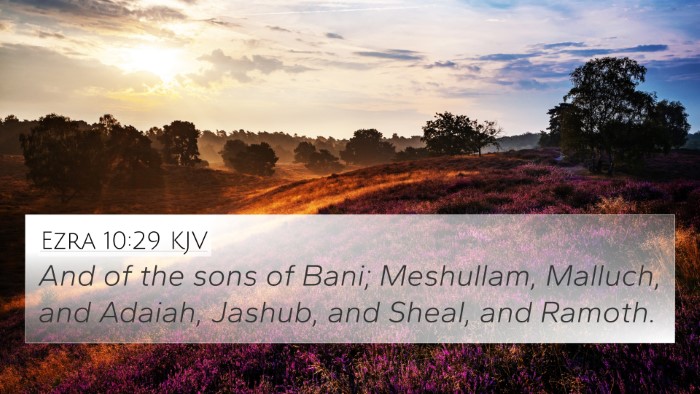
Ezra 10:29 (KJV) »
And of the sons of Bani; Meshullam, Malluch, and Adaiah, Jashub, and Sheal, and Ramoth.
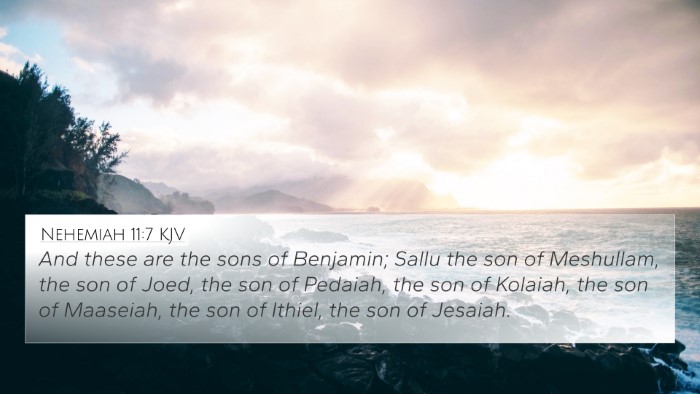
Nehemiah 11:7 (KJV) »
And these are the sons of Benjamin; Sallu the son of Meshullam, the son of Joed, the son of Pedaiah, the son of Kolaiah, the son of Maaseiah, the son of Ithiel, the son of Jesaiah.
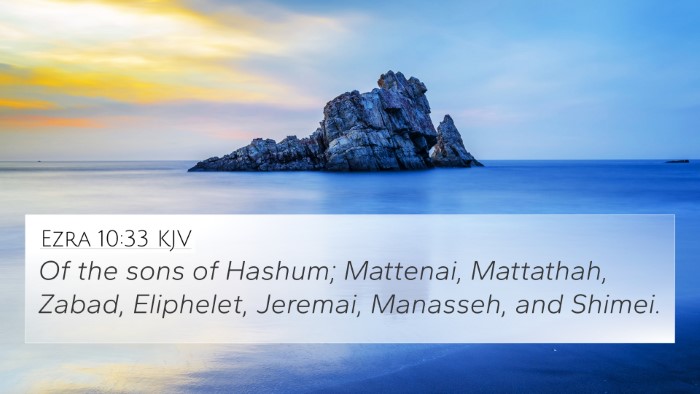
Ezra 10:33 (KJV) »
Of the sons of Hashum; Mattenai, Mattathah, Zabad, Eliphelet, Jeremai, Manasseh, and Shimei.
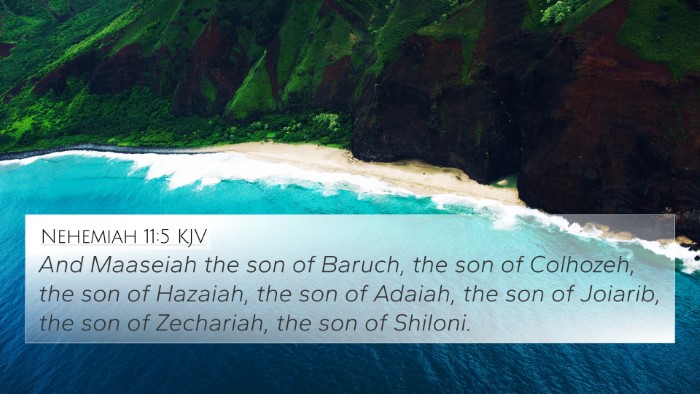
Nehemiah 11:5 (KJV) »
And Maaseiah the son of Baruch, the son of Colhozeh, the son of Hazaiah, the son of Adaiah, the son of Joiarib, the son of Zechariah, the son of Shiloni.
Nehemiah 8:4 Verse Analysis and Similar Verses
Understanding Nehemiah 8:4
Bible Verse: Nehemiah 8:4 - "And Ezra the scribe stood upon a pulpit of wood, which they had made for the purpose; and beside him stood Mattithiah, and Shema, and Anaiah, and Urijah, and Hilkiah, and Maaseiah, on his right hand; and on his left hand, Pedaiah, and Mishael, and Malchijah, and Hashum, and Hashpadana, Zechariah, and Meshullam."
Verse Summary
This verse describes Ezra the scribe standing on a constructed platform of wood, indicating the importance and intentionality of the occasion. Surrounded by various leaders, Ezra's position signifies authority in the reading of the Law, emphasizing the communal aspect of worship and the centrality of Scripture in the lives of the Israelites.
Commentary Insights
Matthew Henry's Commentary
Henry emphasizes the significance of Ezra's role as a scribe and his dedication to the Word of God. The "pulpit of wood" symbolizes the elevated status of God's law among the people, with Ezra presenting the Scriptures in a public setting to encourage collective understanding and commitment to God's commands. The association with leaders underscores the communal responsibility to uphold and follow God’s laws.
Albert Barnes' Commentary
Barnes highlights the logistical preparations behind Ezra’s reading. The "pulpit of wood" indicates a specially designated area for this sacred activity, demonstrating the respect needed for God's Word. The multitude standing nearby shows the engagement of the community, fostering unity and teaching, essential for spiritual renewal after their return from exile.
Adam Clarke's Commentary
Clarke addresses the need for order and structure in worship, as demonstrated by the situation described in this verse. Ezra's presence and the individuals by his side represent both leadership and the authority of Scripture. Clarke notes that such gatherings served to reinforce the people’s covenant with God through serious, collective instruction in the Scriptures.
Cross-Referencing the Verse
This verse connects to several others throughout Scripture that establish the importance of the reading and teaching of God’s Word:
- Deuteronomy 31:9-13: Moses instructs the Levites to read the Law before all Israel.
- 2 Chronicles 34:30: King Josiah gathers the people to hear the words of the Law read publicly.
- Ezra 7:10: Ezra prepared his heart to seek the Law of the Lord and to do it, emphasizing his commitment to teaching it.
- Psalm 119:105: "Thy word is a lamp unto my feet, and a light unto my path," underscoring the guiding nature of Scripture.
- Acts 15:21: Reference to Moses being read in every city, highlighting the ongoing community engagement with Scripture.
- 1 Timothy 4:13: Paul’s instructions to Timothy to devote himself to public reading of Scripture.
- Romans 10:17: "Faith comes from hearing, and hearing through the word of Christ," indicating the necessity of teaching for faith development.
- Hebrews 4:12: "For the word of God is living and active, sharper than any two-edged sword," showing the dynamic influence of Scripture.
- Colossians 3:16: Encouragement to let the word of Christ dwell in them richly, teaching and admonishing one another.
- James 1:22: "Be doers of the word, and not hearers only," emphasizing action based on hearing God’s Word.
Thematic Connections
Nehemiah 8:4 serves as a pivotal moment in the narrative of the Israelites, reflecting themes of:
- Restoration: Symbolizing the restoration of the spiritual life of Israel after exile.
- Authority of Scripture: Highlighting how the reading of the Law was central to the community’s identity.
- Community Engagement: Demonstrating the collective effort in understanding and following God’s commands.
- Leadership: Reflecting the importance of qualified leaders in the teaching and application of Scripture.
- Worship and Reverence: The physical act of reading the Law showcases worship through knowledge and practice.
Conclusion
Nehemiah 8:4 showcases an essential event in the restoration of Jewish worship and community identity after the Babylonian exile, framing the way Scripture is perceived and utilized in community life. The elevated platform of Ezra serves as a reminder of the necessity and reverence given to God's Word, along with the communal responsibility shared among the people. Through cross-references with other scriptures, the significance of this moment expands, linking it to the broader biblical narrative concerning the reading and obeying of God's law.
